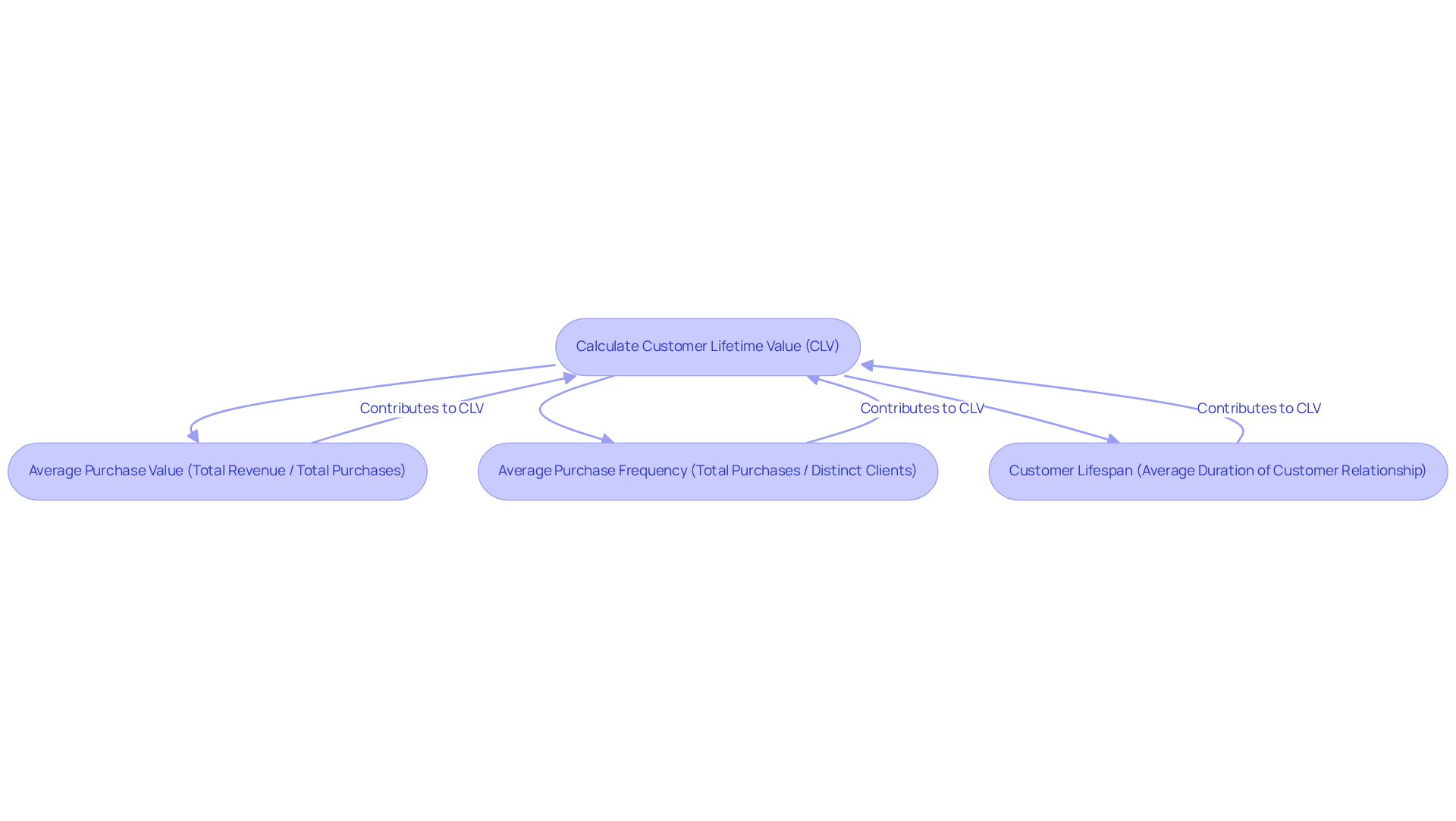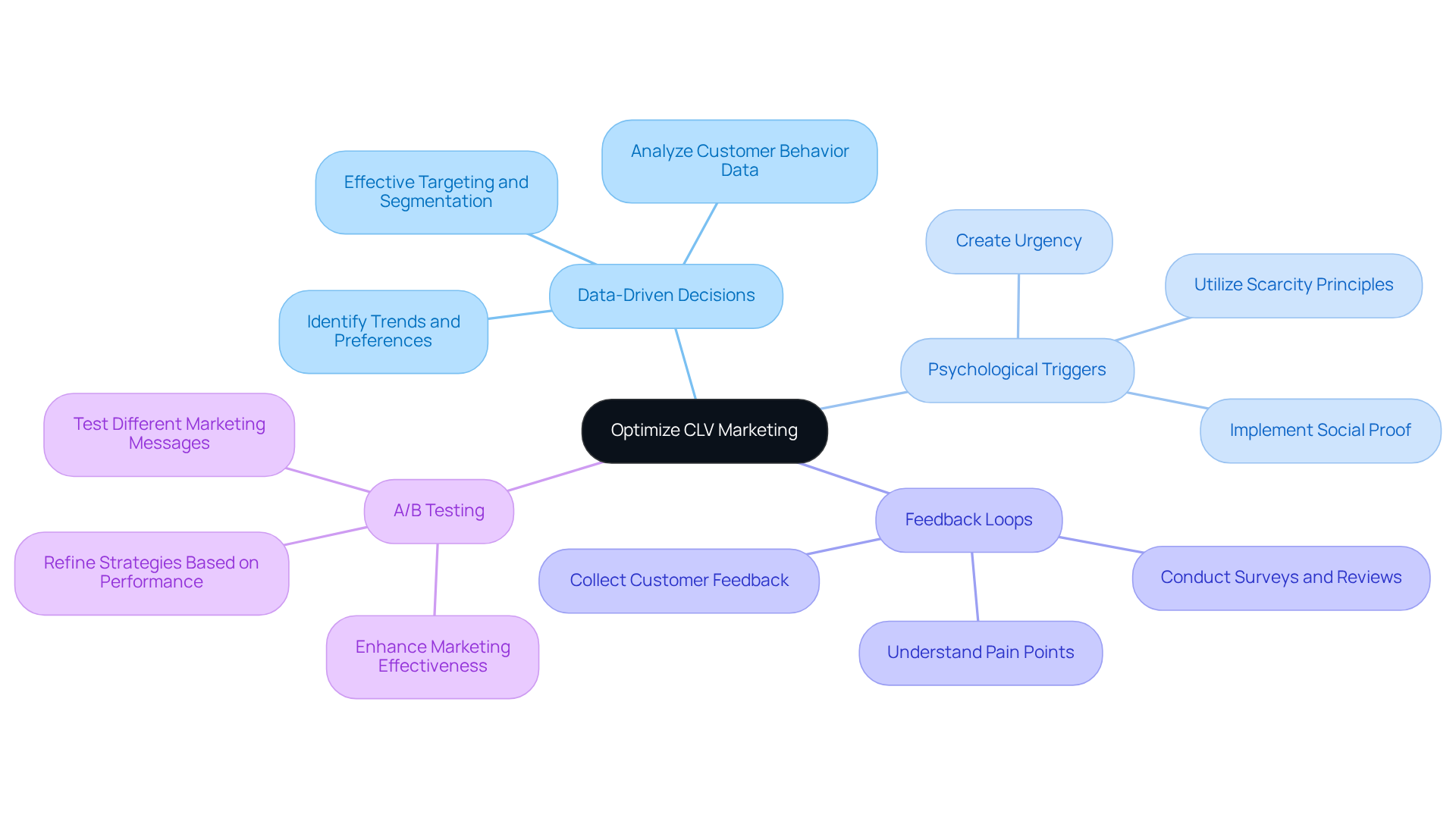
Overview
The article addresses critical strategies for enhancing Customer Lifetime Value (CLV), a vital component for increasing profitability among direct-to-consumer (DTC) brands. Understanding and accurately calculating CLV is paramount; it serves as the foundation for informed decision-making and strategic planning. By implementing targeted strategies—such as enhancing customer experience, personalizing interactions, establishing loyalty programs, and leveraging data analytics—brands can cultivate long-term customer relationships that drive sustainable growth.
To begin with, improving customer experience is essential. A seamless and enjoyable interaction not only retains existing customers but also attracts new ones. Personalization further amplifies this effect, as tailored experiences resonate more deeply with consumers, fostering loyalty and repeat business. Loyalty programs serve as an effective tool to incentivize ongoing engagement, rewarding customers for their continued patronage.
Moreover, data analytics plays a crucial role in this equation. By analyzing customer behavior and preferences, brands can make informed decisions that enhance their offerings and marketing strategies. This data-driven approach not only strengthens customer relationships but also positions brands for long-term success in a competitive landscape.
In conclusion, by focusing on these strategies, DTC brands can significantly boost their CLV. The combination of an exceptional customer experience, personalized interactions, effective loyalty programs, and insightful data analytics creates a robust framework for sustainable growth. Brands that prioritize these elements will not only enhance their profitability but also secure a loyal customer base that propels them forward.
Introduction
Understanding Customer Lifetime Value (CLV) is paramount for direct-to-consumer (DTC) brands striving to excel in a fiercely competitive marketplace. This vital metric not only forecasts future revenue from individual clients but also plays a pivotal role in shaping marketing strategies and guiding investment decisions. As DTC companies pursue sustainable profitability, the challenge lies in effectively enhancing CLV through targeted strategies.
Brands must leverage data-driven insights and consumer psychology to optimize their marketing efforts, ultimately boosting profitability. How can they achieve this?
Define Customer Lifetime Value and Its Importance for DTC Brands
Customer Lifetime Value (CLV) serves as a critical metric that forecasts the total revenue a business can expect from an individual client account throughout their relationship. For direct-to-consumer (DTC) companies, understanding CLV is essential; it informs marketing strategies, client acquisition costs, and overall business growth. A higher CLV indicates that a company is in a position to invest more in customer acquisition, as the long-term returns justify the initial expenditures.
Moreover, focusing on CLV drives companies to enhance customer experiences, fostering increased loyalty and repeat transactions. These factors are vital for achieving sustainable profitability in a competitive landscape. By prioritizing CLV, businesses can strategically allocate resources, ensuring that investments in customer relationships yield significant returns.

Calculate Customer Lifetime Value: Essential Formulas and Metrics
To effectively calculate Customer Lifetime Value (CLV), brands can utilize the formula:
CLV = (Average Purchase Value) x (Average Purchase Frequency) x (Customer Lifespan).
- Average Purchase Value is derived by dividing total revenue by the total number of purchases within a specified timeframe.
- Average Purchase Frequency is calculated by dividing the total number of purchases by the number of distinct clients during that same period.
- Customer Lifespan indicates the average duration a customer remains involved with the company.
Consistently assessing CLV marketing allows companies to track changes over time, reveal trends, and improve their approaches to enhance profitability. This proactive approach is essential for adapting to the evolving landscape of direct-to-consumer marketing.
Incorporating comprehensive Conversion Rate Optimization (CRO) strategies can significantly enhance CLV marketing. By aligning paid ads and landing pages, companies can drive higher conversion rates, ultimately increasing the profitability derived from each customer. A holistic approach to CRO, which involves rigorous testing and alignment of marketing efforts, ensures that companies maximize their existing resources effectively.
By leveraging these insights and adopting a data-driven approach to CLV marketing, DTC companies can enhance their profitability and ensure long-term success.

Implement Strategies to Increase Customer Lifetime Value
To effectively boost Customer Lifetime Value (CLV), DTC brands can implement several key strategies:
-
Enhance Customer Experience: Investing in user-friendly website design and seamless checkout processes significantly reduces cart abandonment rates. A cohesive client experience across all touchpoints is essential; individuals who rate their experience a perfect 10 are likely to spend 140% more and remain loyal up to six times longer.
-
Personalization: Utilizing client data to customize marketing messages and product suggestions fosters a sense of value and understanding among clients. Personalization has been shown to lead to an 8% increase in conversion rates, demonstrating its effectiveness in driving profitability.
-
Loyalty Programs: Implementing rewards programs that incentivize repeat purchases encourages clients to return for future transactions. Successful loyalty initiatives can significantly enhance CLV, as they create emotional connections and encourage advocacy.
-
Upselling and Cross-selling: Educating support teams to recommend complementary products during interactions can enhance the average order value. Effective upselling techniques can result in significant revenue increases, as pleased clients are more inclined to react favorably to personalized suggestions.
-
Regular Engagement: Sustaining ongoing communication via email marketing, social media, and tailored offers keeps the name prominent for clients. Engaging content and timely interactions can enhance relationships, leading to increased retention and loyalty.
By concentrating on these strategies, DTC companies can craft outstanding client experiences that not only enhance CLV but also promote sustainable profitability.

Leverage Data and Consumer Psychology to Optimize CLV Marketing
To optimize CLV marketing, direct-to-consumer (DTC) brands must leverage data analytics alongside insights into consumer psychology.
-
Data-Driven Decisions: By analyzing customer behavior data, brands can identify trends and preferences, facilitating more effective targeting and segmentation. This data-centric approach empowers brands to make informed decisions that resonate with their audience.
-
Psychological Triggers: Employing principles of consumer psychology—such as scarcity and social proof—can create urgency and encourage purchases. These psychological insights not only drive sales but also enhance the overall customer experience.
-
Feedback Loops: Regularly collecting customer feedback through surveys and reviews is essential for understanding pain points and areas for improvement. This fosters a customer-centric approach, ensuring that brands remain responsive to their audience's needs.
-
A/B Testing: Continuously testing different marketing messages and strategies allows brands to determine what resonates best with their target audience. By refining approaches based on real-world performance, brands can enhance their marketing effectiveness and drive better results.

Conclusion
Understanding and enhancing Customer Lifetime Value (CLV) is essential for the profitability of direct-to-consumer (DTC) brands. By focusing on this key metric, companies can make informed decisions that not only boost their marketing strategies but also foster long-term customer relationships. Prioritizing CLV allows DTC brands to allocate resources more effectively, ensuring that investments in customer experiences yield substantial returns.
The article discussed various strategies to increase CLV, including:
- Improving customer experiences
- Personalizing marketing efforts
- Implementing loyalty programs
- Utilizing upselling techniques
It emphasized the importance of data-driven decisions and consumer psychology in optimizing CLV marketing, showcasing how brands can leverage insights to better understand their customers and enhance engagement. By continuously measuring and adapting their approaches, DTC companies can navigate the competitive landscape and drive sustainable growth.
Ultimately, the significance of CLV extends beyond mere numbers; it represents the foundation of a thriving business model. DTC brands are encouraged to embrace these strategies and insights to cultivate deeper connections with their customers. By doing so, they not only enhance profitability but also establish a loyal customer base that contributes to long-term success.
Frequently Asked Questions
What is Customer Lifetime Value (CLV)?
Customer Lifetime Value (CLV) is a metric that forecasts the total revenue a business can expect from an individual client account throughout their relationship with the company.
Why is CLV important for direct-to-consumer (DTC) brands?
CLV is important for DTC brands because it informs marketing strategies, helps determine client acquisition costs, and supports overall business growth.
How does a higher CLV affect customer acquisition strategies?
A higher CLV indicates that a company can invest more in customer acquisition, as the long-term returns justify the initial expenditures.
How does focusing on CLV benefit customer experiences?
Focusing on CLV drives companies to enhance customer experiences, which fosters increased loyalty and encourages repeat transactions.
What role does CLV play in achieving sustainable profitability?
By prioritizing CLV, businesses can strategically allocate resources, ensuring that investments in customer relationships yield significant returns, which is vital for achieving sustainable profitability in a competitive landscape.
FAQs











